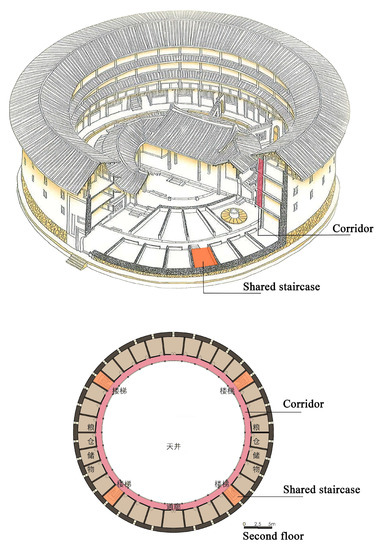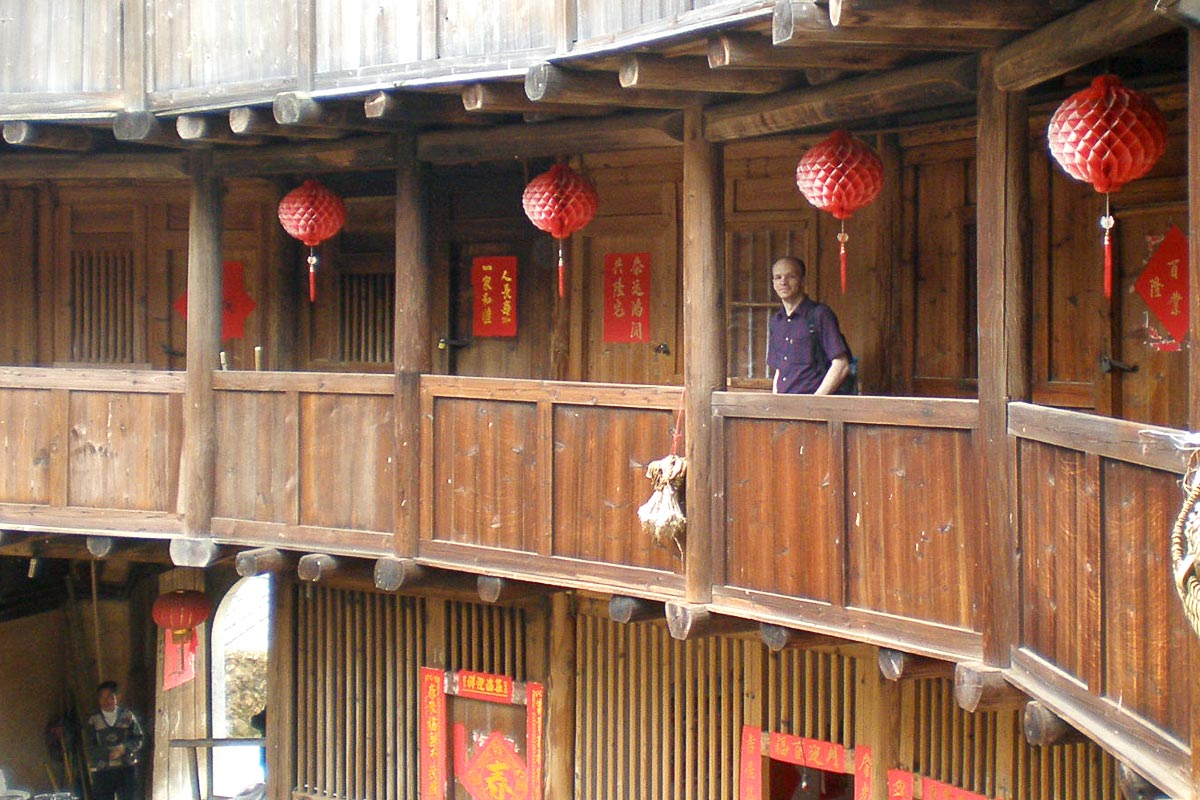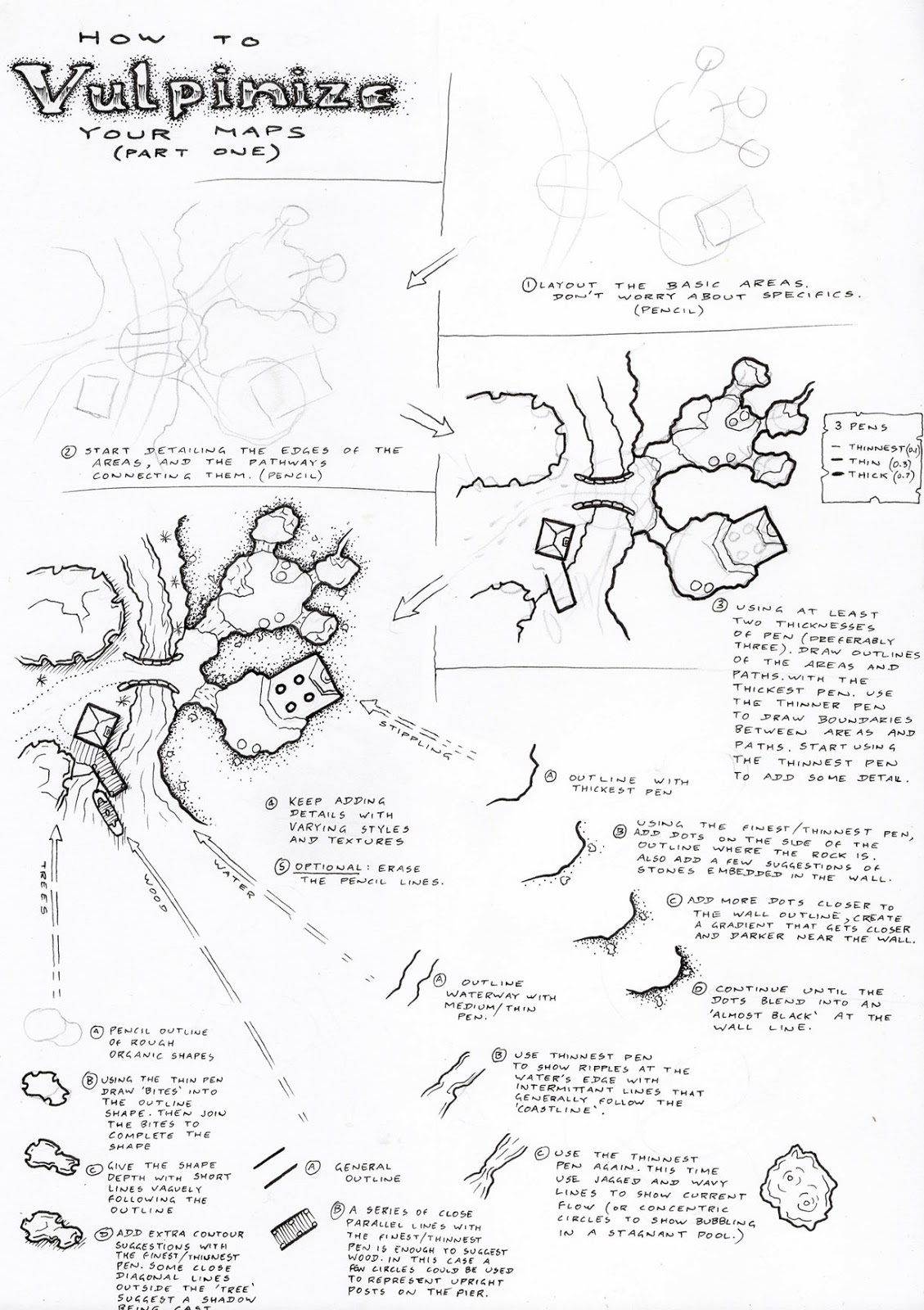Tulou and Fortress (Part 2) - Further image sourcing
The Warhammer Fantasy RPG world, which is the same setting as "The Old World" for Warhammer is set in an equivalent era to the late Middle Ages and early Rennaisance...and my research indicates that Tulou were built from the 15th century onwards. So, by these two ideas, Tulou wouldn't be anachronistic in the setting. Similarly, even though there are plenty of other anachronisms in there already, this sort of building would probably be pretty mundane for the world.
The catch now is working out how big the structure needs to be, and how many people would live in it. Traditionally, it looks like a couple of hundred people would live in a Tulou, and if this first illustration as anything to go by, there would be 30 to 40 rooms spread around the circle (36 in this case), at 3 storeys of habitation. So that's about 90-120 rooms (with a few people in each room). It was all very egalitarian, with similar sized rooms, and I'm figuring that people would work outside the building in farms or workshops (kind of similar to a medieval European boarding house).

Some were bigger than others, so I guess it's now down to working out how much room I have to work with. Comparing that the the scale of the figures, and detailing things appropriately.

Warhammer Old World miniatures are officially 28mm scale, but Games Workshop's size creep probably makes me feel like they'll actually be a bout 30mm, because many of the heroes tend to creep toward 32nm scale. In non-wargaming talk, this means I'll be creating a building around 1:60 scale, and in that scale, 5 feet becomes 1 inch... 3 metres becomes 5 centimetres. It's not a regular metric scale, but the numbers are easy enough to work with. A lot of the old terrain I made for Mordheim back in the day worked on the idea of 5cm or 2 inches per storey of building height. So this sort of thing will still fit with the last remaining buildings and terrain I've got for that set up.

Details that afre probably safe to work with...
- We're looking at rammed earth walls on the outside, and reinforced woodwork forming the structures within. A tulou was typically built on flat ground. (which makes it easy)
- There are probably going to be about 80 miniatures in the starter box, and if I'm planning to get a few of the extra sets to go with this, I'm probably looking at a structure that will need to handle about 100 figures all up.
- I've got a board that's ready to go. It's about half a metre by half a metre in size, that would be about 30m x 30m (roughly 100feet x 100feet) in scale. I don't know if I'll be able to use that board, but it'll be nice to reuse something that's ready to go.
- I've got sheets of foamcore board, and plenty of wood to make the structure.
- The structure may need to be modified in such a way that a figure can be placed evenly in the corridors or in the rooms, possibly also modifying the structure to allow figure placement on the roof, or in stairways (especially if a Mordheim/Necromunda-styled scenarios is to be played in it...this is giving me ideas)
- I'm pretty much ready to go, I just need to draw out the design, and start building.

One of the things to remember about wargame terrain building (as a opposed to scale model building), is the differences in use and purpose for the final product. Both are intended to "look cool", but a scale model is often intended to optimise looking realistic, while wargame terrain is designed to be functional. Both need signature elements to draw the eye and keep things interesting for observers, but the model often has a "look but don't touch" aura about it, while the wargame terrain is intended to be used and is often abused by other players who don't have the same respect for your stuff. So this is really the point where I need to know which path I'm aiming toward with the construction of these buildings. (I'm pretty sure I covere dthis last time I did a terrain building series...wow, that was over a decade ago).
A few more bits of research indicate that apparently, not all of the Tulou are round, some are square. (I don't know if these square versions have another name for them at this point, but given the miniature game system I'm building this project has gone out of it's way to point out that it uses old school square bases rather than round ones it felt an interesting thing to consider.) Square buildings are so much easier to build and are so much easier to make modular for a terrain table.


Next up, some sketches...

.png)

Comments